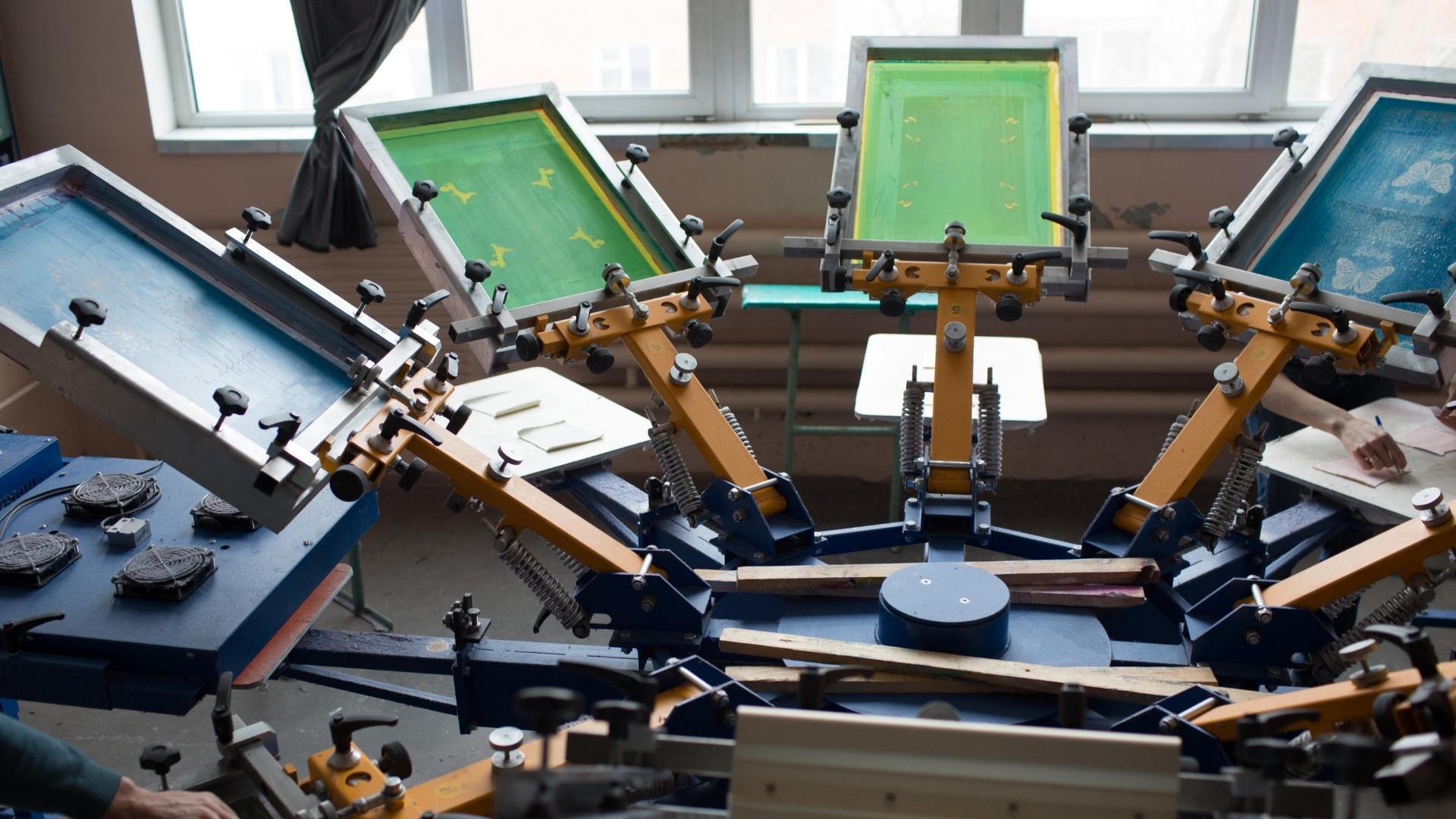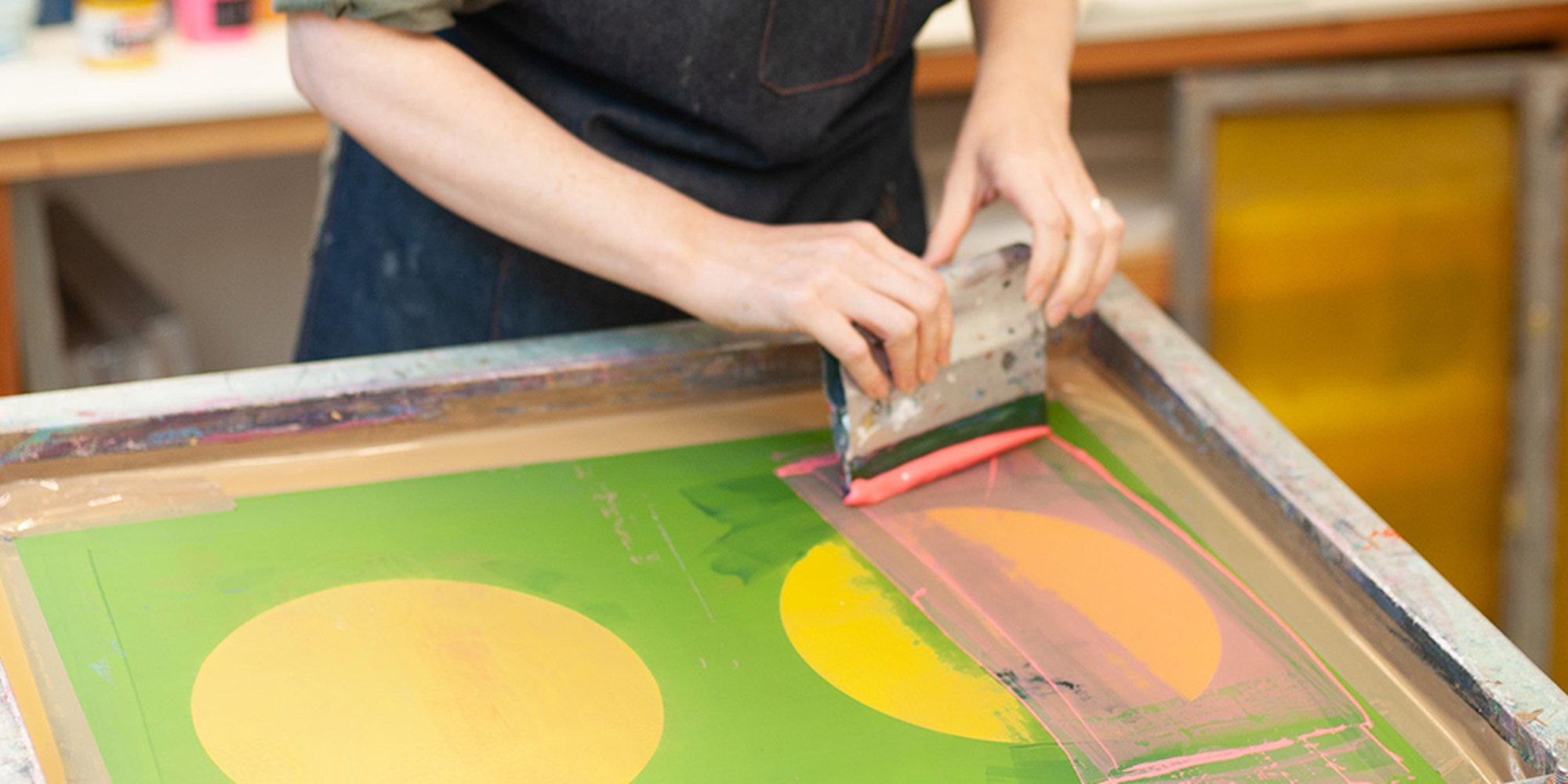ChatGPT said: How 10:9 Design Abilene is helping local businesses
Wiki Article
The Crucial Guide to Comprehending Screen Printing and Its Versatile Utilizes
Screen printing has an abundant history that dates back to old times, advancing right into an innovative strategy made use of throughout various sectors today. This overview checks out the ins and outs of the screen printing procedure, outlining its applications in advertising and marketing, home, and fashion decoration - 10:9 Design Texas. Understanding these principles can open up imaginative capacity for both creative and commercial tasks. The complying with areas will certainly expose essential ideas and strategies to improve one's screen printing endeavorsThe Background of Screen Printing
Although screen printing has roots that trace back centuries, its advancement shows the artistic and technological improvements of numerous cultures. Stemming in old China, the strategy was at first used for embellishing fabrics and later spread to Japan, where it came to be essential to Ukiyo-e woodblock printing. The approach changed to Europe in the 18th century, where it acquired appeal among artisans and industrial printers. The development of photo solution in the 20th century revolutionized screen printing, enabling for even more intricate styles and higher efficiency. Artists like Andy Warhol further thrust its popularity, utilizing the tool to create renowned works that mixed commercialism and great art. By the late 20th century, screen printing had developed itself as a functional strategy, utilized in style, advertising, and fine art. Today, it continues to advance, incorporating digital modern technology and expanding its applications across different markets.The Screen Printing Refine Explained
Screen printing changes artistic visions right into tangible styles with a series of exact actions. Originally, an image is developed and after that moved onto a screen, commonly constructed from great mesh fabric extended over a framework. A light-sensitive solution is put on the screen, which is subjected to light, solidifying in areas not covered by the image. After washing out the unhardened solution, a stencil is created.Next, the screen is positioned over the substrate, whether it be textile, paper, or one more product. Ink is then pressed through the open locations of the stencil utilizing a squeegee, depositing the style onto the substratum below. This procedure can be repeated for numerous colors, calling for separate screens for each and every hue. Ultimately, the printed product is treated using warm to ensure the ink sticks appropriately, resulting in a sturdy, dynamic style all set for use.
Kinds of Screen Printing Techniques

Furthermore, specialty techniques, such as look at this website discharge screen printing, eliminate dye from the textile to produce softer prints, while foil screen printing applies metal foil to achieve a glossy surface (10:9 Design Texas). Each method provides distinctive characteristics, satisfying various innovative demands and production scales, eventually increasing the possibilities within the screen printing domain
Applications of Screen Printing in Numerous Industries

Furthermore, the signs and advertising industries make additional reading use of screen printing for producing distinctive display screens and banners. This approach permits bold colors and detailed styles that record attention. In electronic devices, screen printing is employed for using conductive inks to circuit card, crucial for element links. Moreover, the home décor market accepts screen printing to create distinct layouts on textiles and wall art. Overall, screen printing offers as an important device throughout varied areas, boosting items with personalized and visually appealing graphics.
Tips for Successful Screen Printing Projects
While embarking on a screen printing job, mindful interest to information can substantially boost the final result. Initially, selecting high-quality products is important; this includes the screen, inks, and substrates. Making use of ideal mesh counts can impact ink deposition and detail resolution. Preparation is similarly crucial; detailed cleaning of screens and correct direct exposure times ensure crisp prints.Next, exact registration is vital for multi-color prints. Using alignment devices can help attain exact layering. Furthermore, screening prints on scrap products before production assists determine potential issues without wasting sources.

Often Asked Concerns
What Materials Are Finest for Screen Printing on Material?
Cotton and polyester blends are excellent for screen printing on fabric due to their sturdiness and ink absorption. Furthermore, specialty materials like silk or canvas can create special structures and surfaces, enhancing the total layout quality.Just how Do I Clean and Maintain Screen Printing Equipment?
To cleanse and maintain screen printing devices, one should consistently clean screens with ideal solvents, check squeegees for wear, lube relocating parts, and shop all things in a dry, dust-free atmosphere to lengthen their lifespan.What Are the Environmental Influences of Screen Printing?
Screen printing can have considerable ecological impacts, including chemical waste from solvents and inks, water use during cleansing processes, and power usage. Sustainable techniques and eco-friendly products are vital for reducing these negative results.Can Screen Printing Be Done in your home Effectively?
Screen printing can be effectively done at home with the ideal materials and methods. Hobbyists can produce top quality prints, though success depends upon their ability level, equipment, and understanding of the process entailed.
What Are the Prices Linked With Starting a Display Printing Service?

Starting a screen printing organization involves expenses for devices, products, and work area. Initial expenditures usually vary from a few hundred to a number of thousand bucks, relying on the scale, top quality of machinery, and preferred manufacturing ability.
Screen printing has a rich background that dates back to old times, advancing right into a sophisticated method utilized across different markets today. An additional strategy, rotating screen printing, uses round displays, helping with constant printing on material rolls, thereby enhancing efficiency for large-scale productions. Furthermore, specialized strategies, such as discharge screen printing, get rid of dye from the textile to create softer prints, while aluminum foil screen printing applies metallic foil to achieve a glossy coating. In the style sector, screen printing is extensively made use of to create vibrant layouts on clothing, making it possible for brands to showcase their distinct designs. Cotton and polyester blends are ideal for screen printing on material due to their longevity and ink absorption.
Report this wiki page